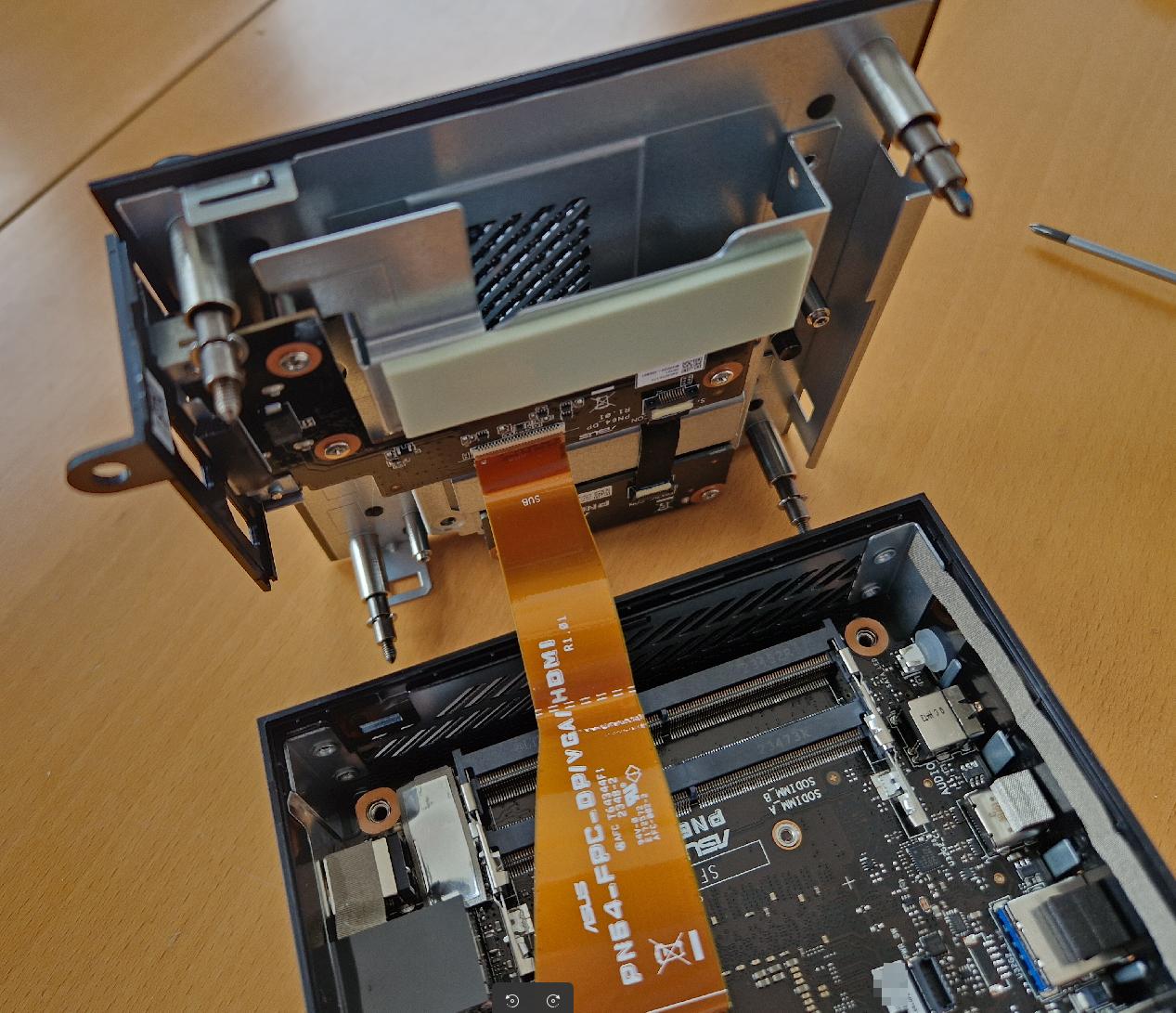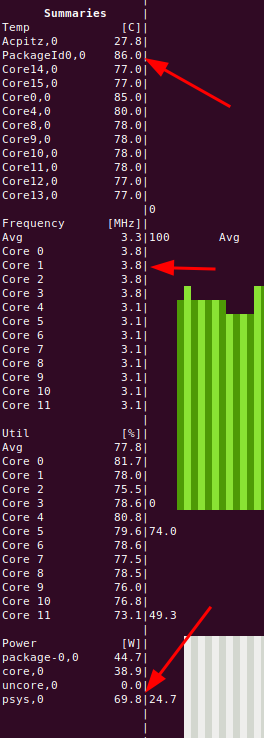
If you are a regular reader of this blog, you are probably aware that I run my own private cloud at home. One server is around 4 years old by now, while the other one, mainly used as a central hub for backups celebrated it’s 11th birthday this year. In other words, it was time for a bit of a refresh. For my private cloud I like to use small NUC servers, as they offer a good size / performance / heat / noise balance for home use. As Intel is no longer producing NUCs, I was looking for an alternative. After a bit of searching, I decided to go for an Asus PN-64 barebone with an Intel i3-1220P processor. While being a pretty recent processor, I didn’t expect to see a massive computing performance increase compared to the 4 year old NUC. When I saw the first performance results, however, I could hardly believe my eyes.

Hardware Overview?
Before talking about computational performance, let’s first have another look at the hardware. As I intend to run this platform for quite a number of years, I made sure to buy a single 32 GB DDR5 SO-DIMM instead of 2x 16 GB, so I could upgrade the system to 64 GB in the future should it become necessary. I don’t see an immediate need, as my virtual machines and Docker containers require about 12 GB of RAM as we speak. But then, at some point people wondered why anyone would would ever need more than 640 kB of RAM in a PC.
On the storage side, I decided to re-use a 2 TB SATA SSD which I removed some time ago from an older notebook instead of buying a new NVMe drive. While I do need as much processing power as possible for occasional tasks, I will not be able to even remotely use the read/write performance of around 600 MB/s of the drive, not even with the 2.5 Gbps Ethernet port of the system. So the NVMe slot remains empty for the moment, which gives me an option to internally add more storage when it becomes necessary. And it is very likely that it will become necessary at some point, as the flood of pictures and videos produced in the household keeps growing.
Measuring Maximum Performance
So, let’s come back to the performance angle. I like to use my ffmpeg test that cuts and compresses a video to get a general idea of the computing performance of a system. Let’s set a baseline here:
My Lenovo T14 notebook with a 13th generation Intel i5-1335U CPU compresses my test video in around 6 minutes and 50 seconds when set into performance mode. The 4 year old NUC I use in my private cloud with a Core i3-8109U processor runs the same test in 12 minutes and 20 seconds and gets quite a bit noisy in the process.
That being said, let’s look at the Acer P64 barebone and its i3-1220P processor: Much to my surprise, the system blew my high end notebook straight out of the water and ran the same task in just 3 minutes 37 seconds! I was baffled at first, but the reason for this is pretty simple: While my T14 notebook starts the task with a power consumption of around 70 watts, it throttles down pretty quickly to 27 watts to keep the heat and noise in check. The Asus barebone on the other hand has a bigger fan and quite big fan grills to let air in and out. It also ramps up to 70 watts during the decoding process but doesn’t require any speed step down, even when running my test in a loop over half an hour. When running at 70 watts, the fan is quite noisy and I definitely wouldn’t want to sit next to it. Quite a different performance / heat / noise optimization, and exactly the right one for my private cloud platform that does NOT sit under my desk.
Performance and Power Consumption during Day To Day Operation
Fortunately, the 2 performance cores with 2 threads each and the 8 efficiency cores of the i3-1220P only run at an average of 5% load during normal operation, which results in an almost inaudible fan and a power consumption of around 10 watts. Still, it is good to know what kind of performance I can get out of the system for occasional tasks such as video transcoding. Nice!